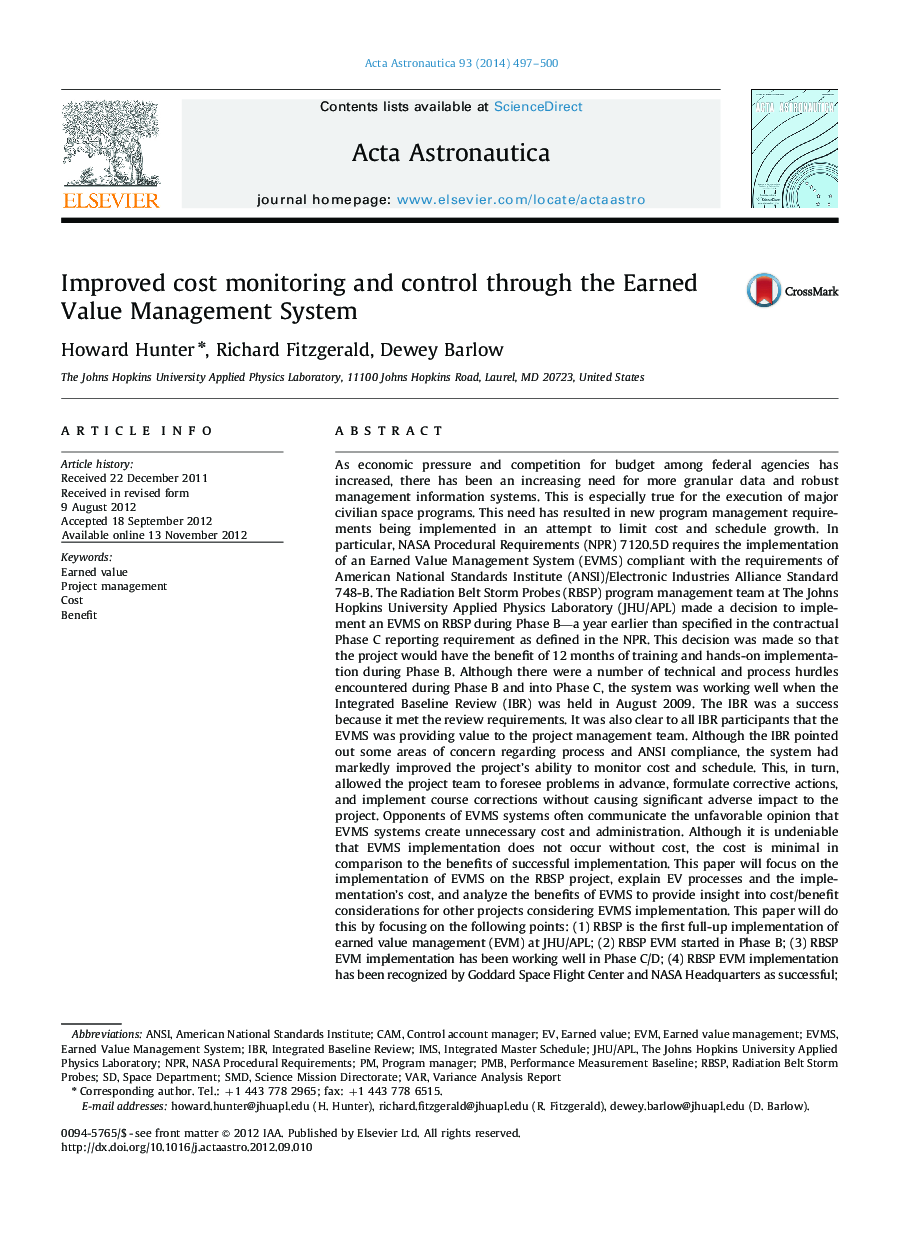| Article ID | Journal | Published Year | Pages | File Type |
|---|---|---|---|---|
| 1714908 | Acta Astronautica | 2014 | 4 Pages |
As economic pressure and competition for budget among federal agencies has increased, there has been an increasing need for more granular data and robust management information systems. This is especially true for the execution of major civilian space programs. This need has resulted in new program management requirements being implemented in an attempt to limit cost and schedule growth. In particular, NASA Procedural Requirements (NPR) 7120.5D requires the implementation of an Earned Value Management System (EVMS) compliant with the requirements of American National Standards Institute (ANSI)/Electronic Industries Alliance Standard 748-B. The Radiation Belt Storm Probes (RBSP) program management team at The Johns Hopkins University Applied Physics Laboratory (JHU/APL) made a decision to implement an EVMS on RBSP during Phase B—a year earlier than specified in the contractual Phase C reporting requirement as defined in the NPR. This decision was made so that the project would have the benefit of 12 months of training and hands-on implementation during Phase B. Although there were a number of technical and process hurdles encountered during Phase B and into Phase C, the system was working well when the Integrated Baseline Review (IBR) was held in August 2009. The IBR was a success because it met the review requirements. It was also clear to all IBR participants that the EVMS was providing value to the project management team. Although the IBR pointed out some areas of concern regarding process and ANSI compliance, the system had markedly improved the project's ability to monitor cost and schedule. This, in turn, allowed the project team to foresee problems in advance, formulate corrective actions, and implement course corrections without causing significant adverse impact to the project. Opponents of EVMS systems often communicate the unfavorable opinion that EVMS systems create unnecessary cost and administration. Although it is undeniable that EVMS implementation does not occur without cost, the cost is minimal in comparison to the benefits of successful implementation. This paper will focus on the implementation of EVMS on the RBSP project, explain EV processes and the implementation's cost, and analyze the benefits of EVMS to provide insight into cost/benefit considerations for other projects considering EVMS implementation. This paper will do this by focusing on the following points: (1) RBSP is the first full-up implementation of earned value management (EVM) at JHU/APL; (2) RBSP EVM started in Phase B; (3) RBSP EVM implementation has been working well in Phase C/D; (4) RBSP EVM implementation has been recognized by Goddard Space Flight Center and NASA Headquarters as successful; and (5) an assessment of the benefits of EVMS to the project management team and sponsor shows that the system's benefits outweigh the cost of implementation.
► Was the implementation and projected cost, 1.22% CTC, of an EVMS worth it? ► The key elements were the project teams' ability in planning, monitoring and controlling the project. ► The right balance was struck between process and results. ► The EVMS team never lost sight of trying to show value at every step in the process. ► The EVMS became a management tool and this became one more part of the CAM tool belt.
